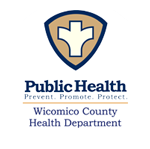Ethylene Oxide (EtO) Emissions
Information
 Attend the National Public Webinar on August 10th.
Attend the National Public Webinar on August 10th.
Topic: Scope of EtO Risks
Register here
On August 3, 2022, the U.S. Environmental Protection Agency (EPA) initiated outreach to communities affected by emissions of ethylene oxide (EtO) from commercial sterilizers.
What is EtO?
EtO is a colorless, odorless gas, that is used at commercial sterilizers to sterilize devices that cannot
be sterilized using steam or radiation, such as some medical and dental equipment. According to the
Food and Drug Administration, approximately 50% of sterile medical devices are treated with
EtO – about 20 billion devices each year. EtO is also used to sterilize some food products such as
spices, certain dried herbs, dried vegetables, sesame seeds and walnuts.
Risks
High concentrations of EtO have been found in the air near some commercial sterilizers. Inhalation
of EtO at these levels, over many years, can increase the lifetime risk of getting cancer. However,
based on current modeling, EPA does not expect EtO levels in the outdoor air around facilities that
release it to be high enough to cause immediate non-cancer health effects.
What’s Happening Now?
EPA is reaching out to state and local governments, communities facing the highest risks, other
interested parties, and industry to share information and hear input on protecting health and
reducing toxic emissions from these facilities. EPA is sharing this information because communities
have a right to know about emissions that could affect their health and well-being and the agency
wants to provide communities with opportunity to provide input on the forthcoming rulemaking.
EPA’s overall action plan to address risks from EtO and learn more about the chemical includes:
- Reviewing Clean Air Act regulations to further reduce EtO emissions from industrial facilities,
particularly rules to control air toxic emissions from commercial sterilizers and facilities that
manufacture chemicals. - Working with state and local air agencies to reduce EtO emissions.
- Expanding environmental reporting requirements for sterilization facilities.
- Reevaluating how EtO is used within sterilization facilities with the goal of reducing risks to
workers who handle EtO and those who are exposed in other ways. - Providing financial resources and technical support for local monitoring activities.
- Conducting research to better understand and measure EtO.
- Assessing compliance and pursuing enforcement as appropriate.
Read the EPA’s press release here
ETHYLENE OXIDE RISK FROM COMMERCIAL STERILIZERS

